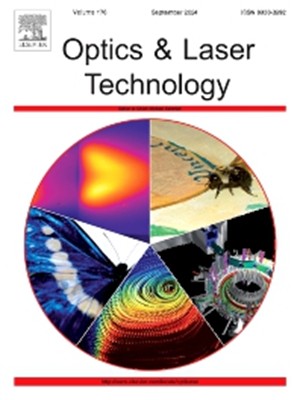Learning with limited annotations: Deep semi-supervised learning paradigm for layer-wise defect detection in laser powder bed fusion
IF 4.6
2区 物理与天体物理
Q1 OPTICS
引用次数: 0
Abstract
Powder bed quality is critical to the quality of parts manufactured by laser powder bed fusion (LPBF) and mass production. Recently, numerous powder bed defect detection methods based on semantic segmentation algorithms have been developed. However, these data-driven approaches face the indispensable challenge of insufficient annotated data. Especially in the context of defect segmentation in Additive Manufacturing (AM), pixel-wise image labeling is time-consuming and demands substantial prior knowledge. Semi-supervised Learning (SSL) can leverage unlabeled data to enhance the training process of deep learning models. During the layer-by-layer forming process in LPBF, thousands of powder bed images can be obtained but most of them remain unused because of the lack of annotations, which fully satisfy the situation with semi-supervised learning. To address the above issue, this paper proposes a deep semi-supervised learning-based paradigm for powder bed defect segmentation, allowing model learning with limited annotated data. Concretely, the proposed paradigm generates pseudo-labels for unlabeled data, enabling the utilization of a substantial amount of unlabeled data in the manufacturing process. Aiming at the issue of low-quality pseudo-labels generated from low-quality unlabeled data, we employ Mean Teacher Framework to separate the generation of pseudo-labels. Moreover, aiming at the lack of data diversity, we employ Consistency Regularization to enhance the model’s generalization performance. Additionally, we created a dataset comprising 406 images of powder-bed defects, with each image annotated at the pixel level. Extensive experiments on the dataset have shown the proposed paradigm’s effectiveness over supervised methods, even with limited labeled data (only 1/8 annotated).
求助全文
约1分钟内获得全文
求助全文
来源期刊
CiteScore
8.50
自引率
10.00%
发文量
1060
审稿时长
3.4 months
期刊介绍:
Optics & Laser Technology aims to provide a vehicle for the publication of a broad range of high quality research and review papers in those fields of scientific and engineering research appertaining to the development and application of the technology of optics and lasers. Papers describing original work in these areas are submitted to rigorous refereeing prior to acceptance for publication.
The scope of Optics & Laser Technology encompasses, but is not restricted to, the following areas:
•development in all types of lasers
•developments in optoelectronic devices and photonics
•developments in new photonics and optical concepts
•developments in conventional optics, optical instruments and components
•techniques of optical metrology, including interferometry and optical fibre sensors
•LIDAR and other non-contact optical measurement techniques, including optical methods in heat and fluid flow
•applications of lasers to materials processing, optical NDT display (including holography) and optical communication
•research and development in the field of laser safety including studies of hazards resulting from the applications of lasers (laser safety, hazards of laser fume)
•developments in optical computing and optical information processing
•developments in new optical materials
•developments in new optical characterization methods and techniques
•developments in quantum optics
•developments in light assisted micro and nanofabrication methods and techniques
•developments in nanophotonics and biophotonics
•developments in imaging processing and systems

 求助内容:
求助内容: 应助结果提醒方式:
应助结果提醒方式:


